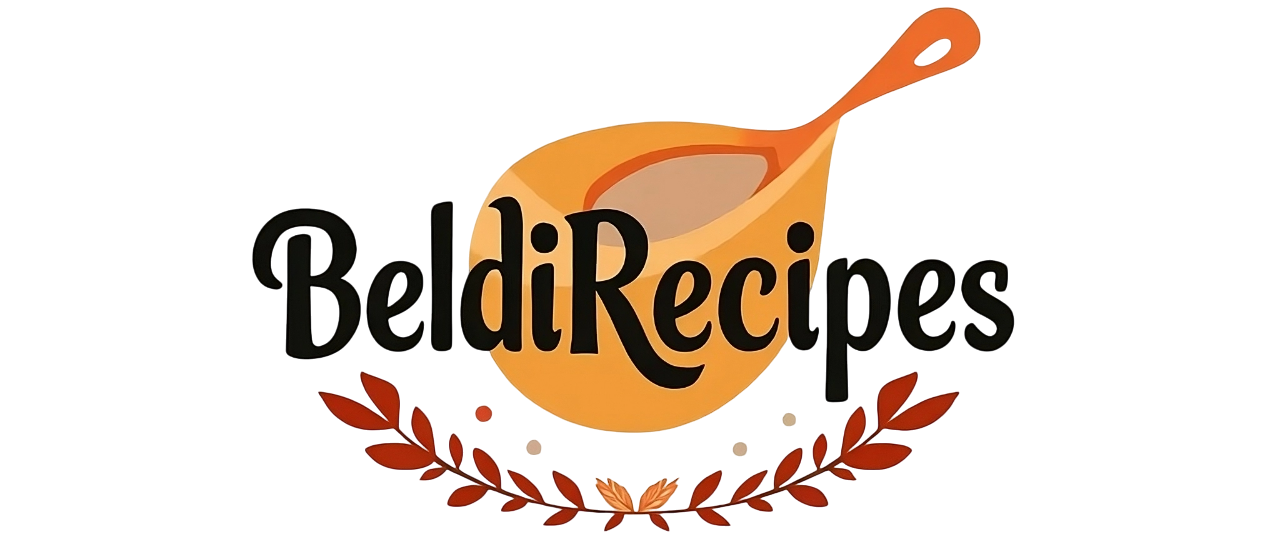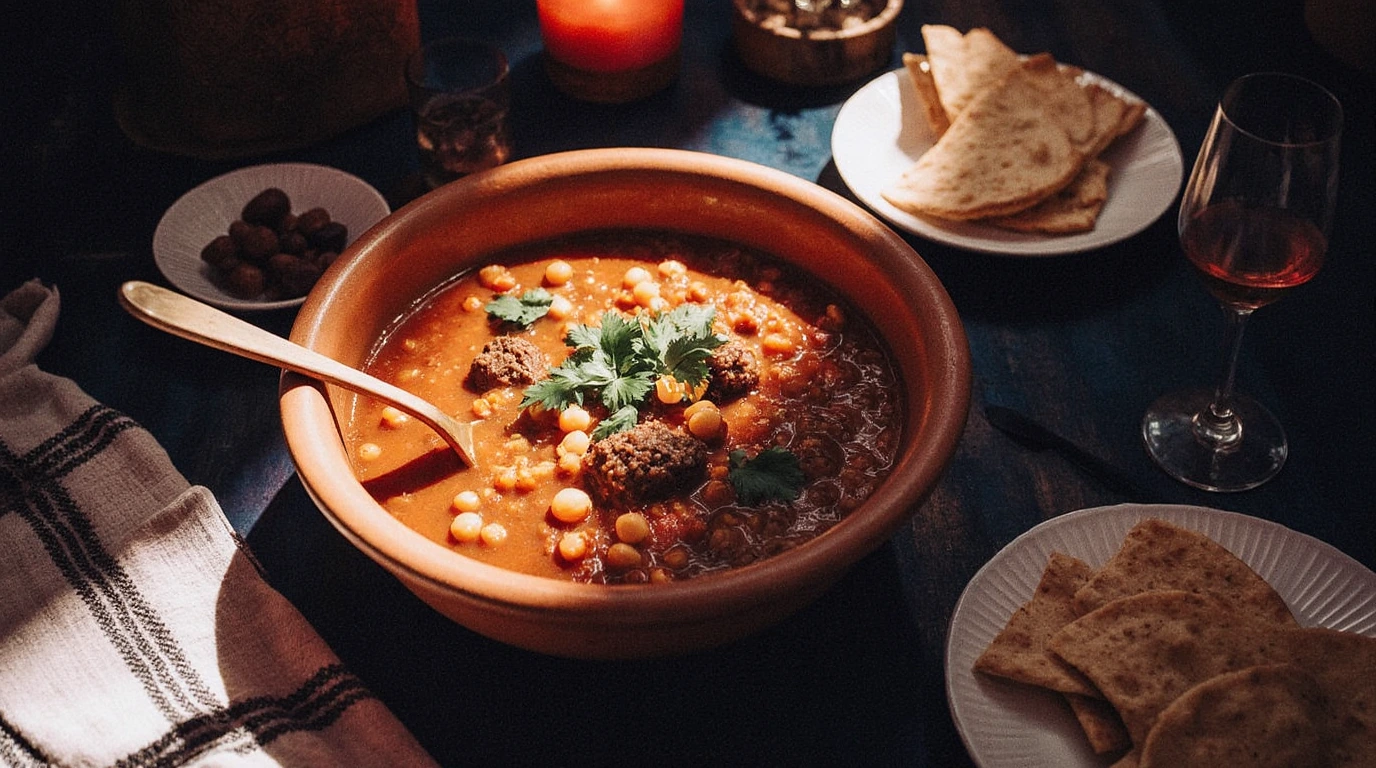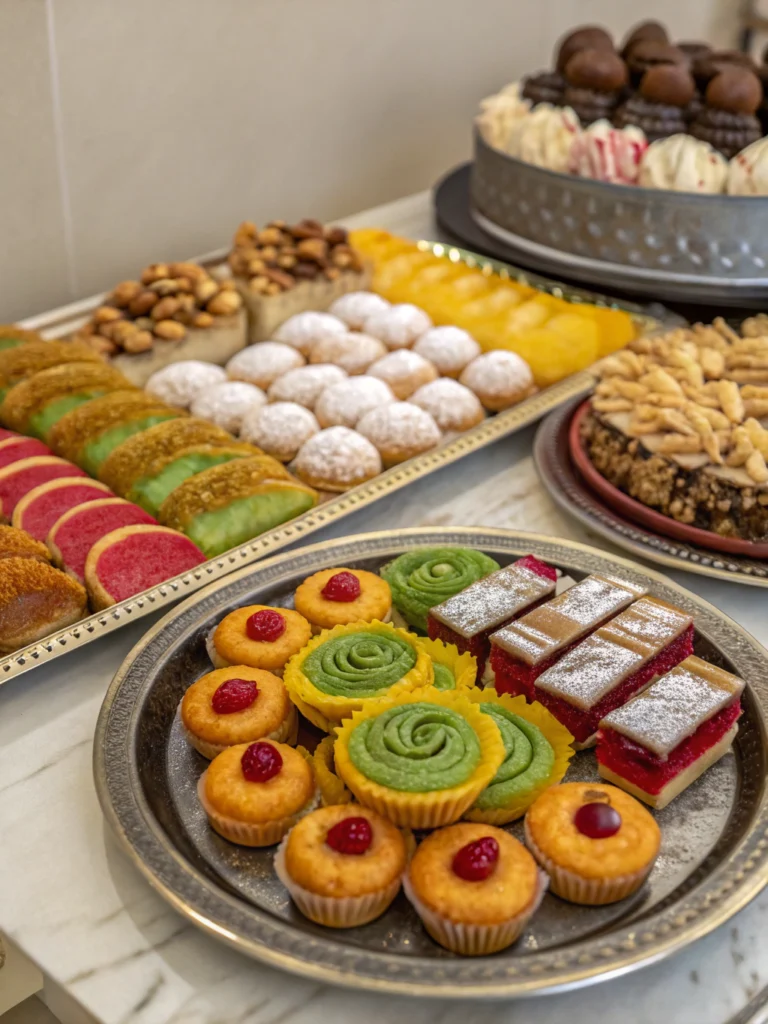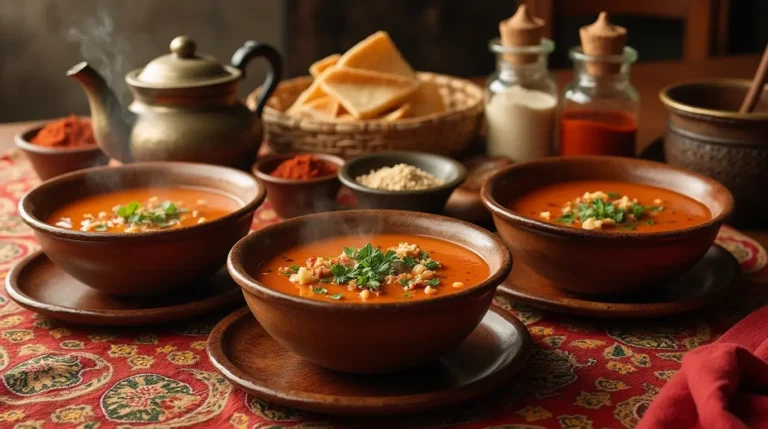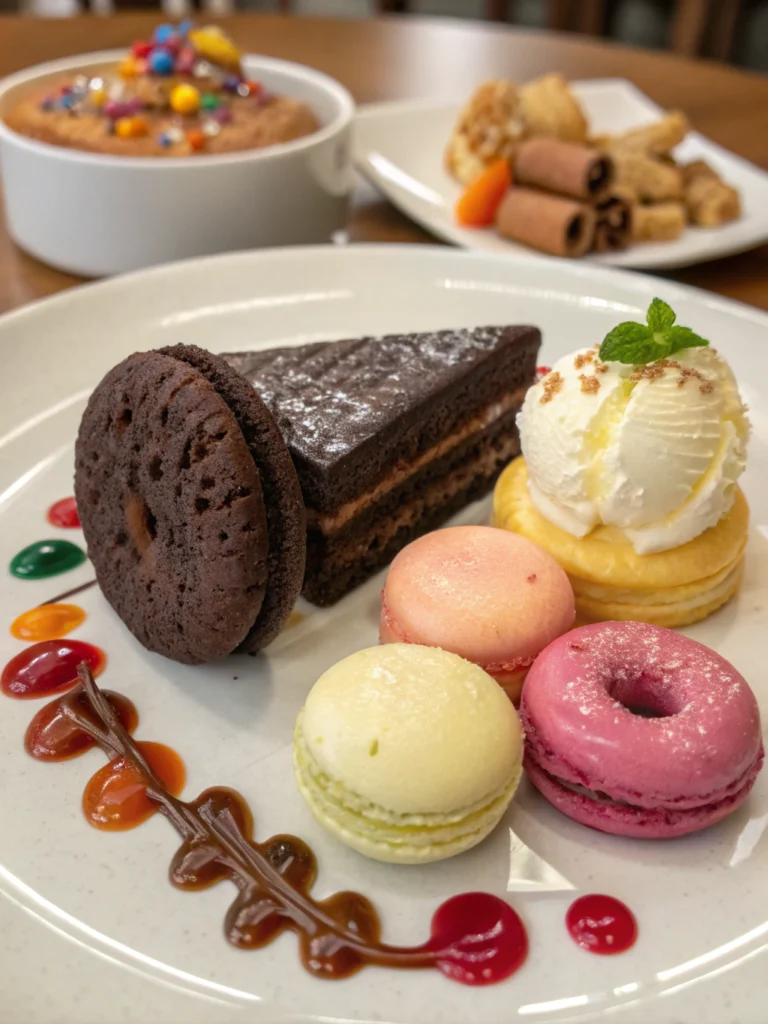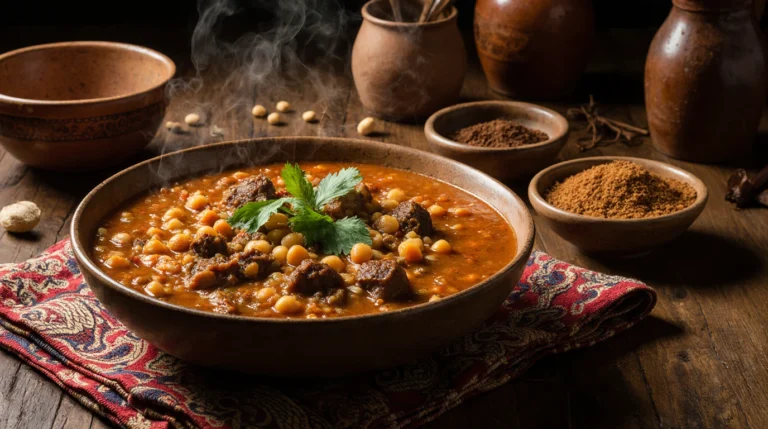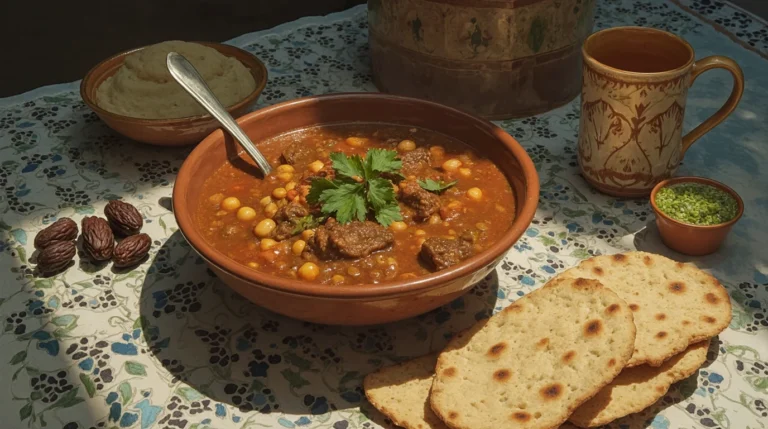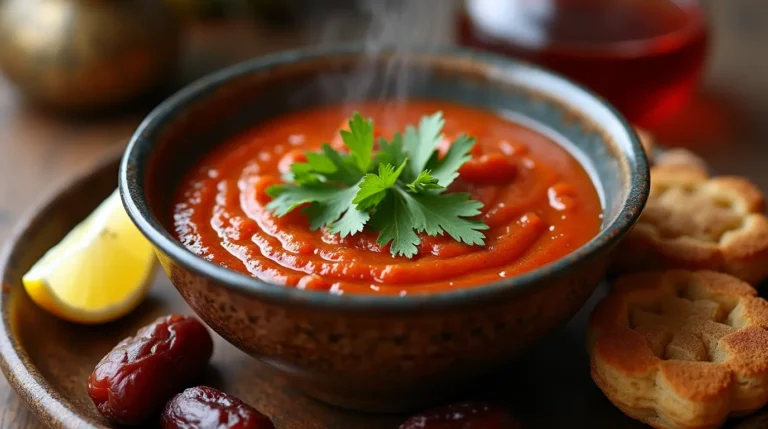Moroccan Harira Soup: A Warm Hug in a Bowl

Imagine a bowl that captures the essence of comfort, tradition, and warmth. Moroccan harira soup is more than a meal. It’s a culinary embrace that connects you to centuries of rich cultural heritage. This remarkable Moroccan cuisine staple transforms simple ingredients into a soul-warming experience.
When you first taste harira soup, you’ll understand why it’s more than just food. It’s a celebration of family, history, and nourishment. Traditionally served during Ramadan, this hearty soup represents resilience and community in every spoonful. Its complex layers of flavor tell a story of Morocco’s diverse culinary traditions.
Whether you’re seeking comfort on a chilly evening or wanting to explore authentic Moroccan cuisine, harira soup offers an incredible journey. Each recipe carries generations of wisdom, blending spices, legumes, and proteins into a harmonious dish. It warms both body and soul.
Get ready to discover the magic of this extraordinary soup that has sustained families through generations. Your culinary adventure into the heart of Moroccan cooking starts here.
The Rich Heritage of Moroccan Harira Soup
Explore the heart of North African flavors with Harira, a traditional soup. It’s more than just food; it’s a window into Moroccan cuisine’s rich history. This dish is a blend of tradition, resilience, and community, deeply rooted in North Africa’s culinary landscape.
Origins in North African Cuisine
Harira comes from Morocco’s diverse culinary traditions. It combines Berber, Arab, and Mediterranean flavors. This soup shows how generations made meals from simple ingredients, passing down cooking secrets.
- Originated in Moroccan kitchens
- Combines multiple cultural cooking techniques
- Represents regional ingredient availability
Cultural Significance During Ramadan
For Muslims in North Africa, Harira is a special Ramadan dish. It brings comfort and community to families each evening. The soup’s warmth and nourishment are vital after fasting.
Evolution Through Generations
Harira has changed over the years, yet its core remains the same. Families update the recipe with new spices and ingredients. But the essence of Harira stays true, showing its lasting cultural value.
- Adapts to modern ingredients
- Maintains core traditional elements
- Reflects family cooking traditions
Essential Ingredients That Make Harira Special
Making a real lentil soup from Middle Eastern cuisine is all about the right ingredients. Harira is more than food; it’s a journey of flavors that honors old cooking ways.
The heart of this amazing soup starts with its main ingredients. You’ll need to focus on these key parts:
- Protein-rich lentils
- Tender lamb broth
- Fresh chickpeas
- Ripe tomatoes
- Aromatic onions
Lamb broth gives the soup a deep, rich taste. Lentils and chickpeas make it thick and filling. Fresh herbs like cilantro and parsley add a bright, complex flavor.
Every ingredient is important for Harira’s unique taste. Lentils soak up the broth’s flavors and offer protein. Tomatoes add a tangy, deep taste that balances the meat and legumes.
Choosing the best ingredients is crucial for a true taste of Morocco in your Harira.
The Perfect Blend of Spices and Aromatics
Exploring Moroccan cuisine starts with its amazing spice mix. Harissa spice blend turns simple foods into something special. It’s all about mastering spice combinations.
Traditional Spice Combinations
Moroccan food is known for its complex flavors. A classic spice mix has:
- Cumin – earthy and warm
- Coriander – citrusy and bright
- Cinnamon – sweet and aromatic
- Paprika – rich and slightly smoky
- Turmeric – golden and peppery
Harissa and Heat Levels
Harissa spice blend adds a lot of heat to dishes. It can be mild or very spicy. Recipes use dried chilies, garlic, and olive oil for a balanced heat.
Balancing Flavors
Creating the right spice blend is all about balance. Start with small amounts and taste as you go. You want a mix where no spice is too strong. Your taste buds will guide you to a true Moroccan dish.
Choosing Quality Ingredients for Your Soup
Making a true Moroccan harira soup begins with picking the right ingredients. Your path to a tasty traditional soup starts with choosing ingredients that reflect Moroccan cooking traditions.

- Choose fresh, high-quality dried lentils with a rich, earthy color
- Select tender lamb or beef from a trusted local butcher
- Use dried chickpeas that are plump and free from cracks
- Pick vibrant, fresh herbs like cilantro and parsley
Spices are key in making a traditional soup. Look for authentic Moroccan spice blends or individual spices like cumin, turmeric, and paprika. You can find these at specialty grocery stores or online. If specific Moroccan spices are hard to find, quality substitutes can still make your soup delicious.
For the most authentic Moroccan harira soup, consider these protein options:
- Lamb (most traditional)
- Beef
- Vegetarian alternatives like extra firm tofu
Your local farmers market or specialty grocery stores can be great places to find fresh, high-quality ingredients. These ingredients will make your soup go from good to amazing.
Step-by-Step Guide to Making Moroccan Harira Soup
Making a comforting stew with North African flavors takes patience and skill. Moroccan Harira soup is a journey that turns simple ingredients into a special meal.
Your Harira adventure starts with choosing the right ingredients. These should capture the essence of North African cuisine. Even though it might seem complex, breaking it down into steps makes it easier for home cooks.
Preparing the Base
Begin by gathering your basic ingredients:
- Diced onions
- Minced garlic
- Fresh tomatoes
- Olive oil
Cook the onions and garlic until they’re translucent. This releases their aromatic flavors, adding depth to your stew.
Adding Proteins and Legumes
Next, add protein and legumes for a hearty base:
- Add lamb or chicken pieces
- Incorporate lentils and chickpeas
- Stir in tomato paste
- Pour in water or broth
Final Seasoning and Garnishing
The final touches are where the magic happens. Sprinkle in cumin, coriander, and cinnamon. Finish with fresh cilantro or parsley for a burst of freshness. Your Harira is now ready to warm hearts and souls.
Tips for Achieving Authentic Texture and Consistency

Making the perfect moroccan harira soup is all about texture and consistency. This traditional dish needs careful attention to get that hearty feel everyone loves.
The secret to a great traditional soup is in how you thicken it. Focus on a few key techniques to turn simple ingredients into a rich, satisfying meal.
- Use flour or rice as a natural thickener
- Gradually add liquid to control consistency
- Stir continuously to prevent lumps
- Let the soup simmer to develop depth
Cooking lentils and chickpeas just right is essential. You want them tender but not mushy, so they keep their shape and add a nice bite. Soft, well-cooked ingredients are the heart of your moroccan harira soup.
Temperature and timing are key to the perfect consistency. Start with medium heat and adjust as needed. Aim for a soup that coats a spoon but isn’t too thick.
- Start with low-medium heat
- Stir frequently
- Allow natural thickening through slow cooking
- Taste and adjust seasonings throughout
Getting better at making this traditional soup takes practice. Each batch helps you find the right balance of ingredients and technique. This makes moroccan harira soup a true culinary treasure.
Serving Suggestions and Traditional Accompaniments
Presenting Moroccan Harira soup is an art that turns a simple meal into a feast. This traditional Ramadan dish needs careful thought on presentation and sides. These elements enhance its true taste.
When serving this Moroccan staple, focus on several key points. These make the meal unforgettable.
Perfect Bread Pairings
Bread is key in enhancing Harira’s flavor. The right bread makes your soup come alive:
- Khobz (traditional Moroccan round bread)
- Flatbreads with crispy edges
- Crusty sourdough
- Whole wheat pita
Garnish Like a Pro
Make your Harira stand out with these garnishes:
- Fresh chopped cilantro
- Lemon wedges
- Finely diced parsley
- Cracked black pepper
Timing Your Meal
In Ramadan, Harira is the main soup for breaking the fast. Serve it warm, best as the first dish after sunset. Its rich flavors and nourishing ingredients offer comfort and energy.
Storage and Reheating Guidelines
Keeping your lentil soup fresh is important. The right storage can make your stew stay tasty. Here’s how to keep your Moroccan Harira Soup perfect.
Refrigeration is crucial for keeping the soup’s quality. Store it in an airtight container after it cools down. This way, it will stay good in the fridge for 3-4 days. The soup’s flavors will even get better with time, making leftovers a treat.
Freezing Your Soup
Freezing is great for keeping the soup for longer. Here’s what to do:
- Cool the soup completely before freezing
- Use freezer-safe containers with tight-fitting lids
- Leave about an inch of space at the top for expansion
- Label containers with the date of preparation
- Freeze for up to 3 months
Reheating Tips
Ready to enjoy your soup again? Here’s how to reheat it:
- Thaw frozen soup in the refrigerator overnight
- Reheat slowly on the stovetop over medium-low heat
- Stir occasionally to prevent sticking
- Add a little water or broth if the soup seems too thick
- Heat until the soup reaches 165°F for food safety
Pro tip: Try to avoid microwaving. It can alter the soup’s texture. Heating it on the stovetop keeps it smooth and flavorful.
Health Benefits and Nutritional Value
Moroccan Harira soup is a nutritional powerhouse in middle eastern cuisine. It’s a hearty lentil soup that offers many health benefits. It’s packed with protein, fiber, and essential minerals, making it a great choice for your body.
Protein Powerhouse
Harira gets its protein from different sources, making it a complete meal. Lentils and chickpeas offer plant-based protein, while meat adds extra protein for muscle support. A single serving can give you:
- 15-20 grams of protein
- Essential amino acids
- Sustained energy release
Fiber and Mineral Boost
Your digestive system will love the high fiber in this traditional lentil soup. The mix of legumes, vegetables, and grains makes it rich in minerals. Key minerals include:
- Iron for blood health
- Magnesium for muscle function
- Potassium for heart health
Caloric Breakdown
For those watching their diet, Harira is a balanced choice. A typical serving has 250-350 calories. It’s a satisfying meal that’s also controlled in calories. You get maximum nutrition with each spoonful of this middle eastern cuisine classic.
Common Variations and Regional Differences
Moroccan harira soup is a colorful mix of flavors from North Africa. Each area adds its own special touch to this favorite dish. This makes the classic recipe come alive in a new way.
Every region has its own way of making moroccan harira soup. They use different ingredients and cooking methods. These choices show what’s available locally and what people like to eat.
- Coastal areas add fresh seafood to their harira
- Mountain towns make it heartier with lamb or beef
- City folks try vegetarian versions
In southern Morocco, the soup is spicier. Chefs add more harissa or chili peppers for a bold flavor. In the north, the spices are milder, letting the soup’s flavors shine.
Harira recipes are passed down in families for generations. Each family has its own way of making it. Some like it thick, others prefer it light. The beauty of moroccan harira soup is how it changes and stays rich in tradition.
- Berbere spice blend variations
- Different legume combinations
- Protein selection differences
Exploring harira’s regional differences lets you see Morocco’s rich food culture. It invites you to enjoy the creativity of North African cooking.
Conclusion
Harira is more than just a soup; it’s a journey into Moroccan cuisine’s heart. It connects you to family traditions and cultural celebrations. Every spoonful brings you closer to the flavors and techniques that make it special.
Learning about Harira opens a door to a world where food is about love, comfort, and community. Whether you’re a beginner or looking to improve, you’ve gained valuable insights. These will help you create a dish that honors Morocco’s rich culinary history.
Remember, cooking is about making connections. It’s about the ingredients, techniques, and stories behind each dish. With your newfound knowledge, you can bring a bit of Moroccan tradition into your kitchen. Let Harira be your gateway to exploring the world of global cuisine, one delicious recipe at a time.
